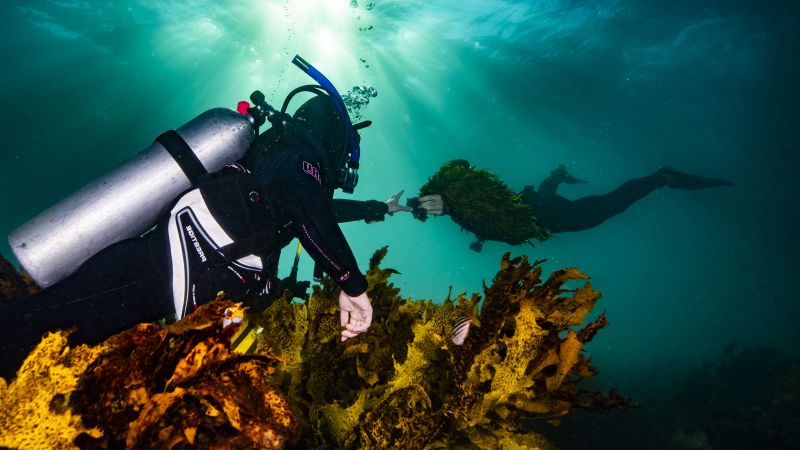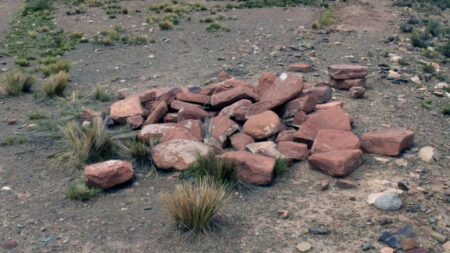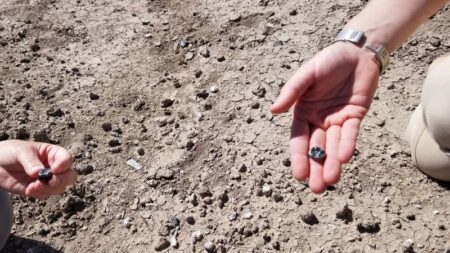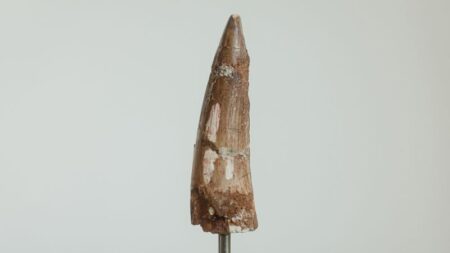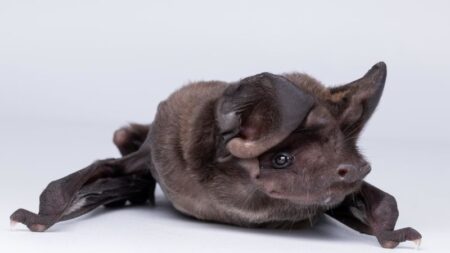The Call to Earth series by CNN is committed to addressing the pressing environmental challenges our planet is facing, providing coverage that seeks to inform and inspire positive action. One of the notable collaborative efforts within this series is the partnership with Rolex’s Perpetual Planet Initiative. This initiative focuses on driving awareness and education regarding essential sustainability issues, and the restoration efforts for marine ecosystems are an important aspect of this mission.
Among these restoration efforts is a project targeting Crayweed, a large golden-brown seaweed species thriving along Australia’s southeastern coast. Crayweed plays a vital role in marine health by capturing carbon, which helps mitigate climate change, and providing shelter for diverse marine species. It also acts as a nursery for economically significant creatures such as abalone and rock lobsters, contributing to both ecological balance and local fisheries.
Historically, Crayweed was prevalent along the coastline of Sydney, yet it vanished from a considerable section – covering 70 kilometers – in the 1980s. This period coincided with increased sewage discharge into Sydney’s waters, negatively impacting the underwater ecosystem. In response to this crisis, conservationists established Operation Crayweed, an initiative largely driven by scientists from various universities and research centers focused on reviving 60 hectares of Crayweed forests in the vulnerable rocky reef habitats of the region.
Dr. Adriana Vergés, a marine ecology professor at the University of New South Wales Sydney and co-founder of Operation Crayweed, articulates the project’s broader goal: “We’re not just bringing back one species; we’re constructing an entire ecosystem.” Remarkably, improvements in sewage disposal methods have led to cleaner waters capable of supporting Crayweed’s resurgence. However, successful restoration requires not only planting but also ensuring that these plants can reproduce.
To facilitate this, at designated restoration locations, scientists and volunteers collect healthy male and female specimens from wild populations. They then attach these to biodegradable mats that are anchored to the reef. The reproductive process commences when male Crayweed releases sperm into the water to fertilize eggs from the female plants, resulting in the growth of young Crayweed known as “craybies.” These youngsters settle on the seafloor and mature into healthy forests. Once the plants have established a strong foundation, the mats are removed, allowing the underwater forests to grow autonomously.
Over the past decade, Operation Crayweed has restored 16 sites along Sydney’s reef systems, with seven sites boasting self-sustaining populations. Covering over two hectares, these restored areas have begun to attract microscopic animals, indicating a thriving ecosystem. The project continues to expand; for instance, three new sites were added in 2024, including Lurline Bay, Dee Why, and South Maroubra. Substantial growth has been reported, particularly in Dee Why, where the juvenile Crayweed population increased drastically within just one year.
As Dr. Vergés observes, the sight of returning Crayweed is uplifting: “When the tide is low, you can see the crayweed swaying as the water pulls away from the coast.” The initiative aims to restore ten more sites over the coming two and a half years, bearing in mind the crucial ecological intersections that these underwater forests represent.
Dr. Prue Francis, a marine science senior lecturer at Deakin University, emphasizes the broader impact of such restoration projects. She points out that people are often alarmed by coral reef bleaching, while the decline of kelp forests like Crayweed can go unnoticed until it is too late. “These underwater forests support a whole ecosystem. When they’re gone, like in parts of Sydney where crayweed has vanished, nothing grows back,” she emphasizes. Importantly, she highlights that initiatives like Operation Crayweed are about much more than just the restoration of a single species; they aim to preserve an intricate web of life reliant upon these vital underwater resources.
In light of the challenges posed by climate change, the team behind Operation Crayweed is employing advanced techniques to enhance the survival of Crayweed. They are mixing genetic stock from both northern and southern regions around Sydney to reflect natural diversity, an innovative approach that may bolster resilience against warming oceans and shifting environmental conditions.
In addition to understanding genetics, the team is initiating a “biobank” for Crayweed populations in preparation for potential heatwave-induced losses. The lessons learned from other marine regions, such as Western Australia, where heatwaves have devastated Crayweed populations, inform these preservation strategies. Utilizing cryopreservation techniques, they collect and freeze sperm and eggs from various populations at ultra-low temperatures.
For the scientists involved, including Catalina López-Bermúdez, who is pursuing her PhD at the University of Sydney, these restoration efforts hold immense emotional significance. “Sometimes, as a young scientist, it’s hard not to feel hopeless. But this feels like something real, something that can make a difference. It gives you hope,” she reflects.
The overarching mission





